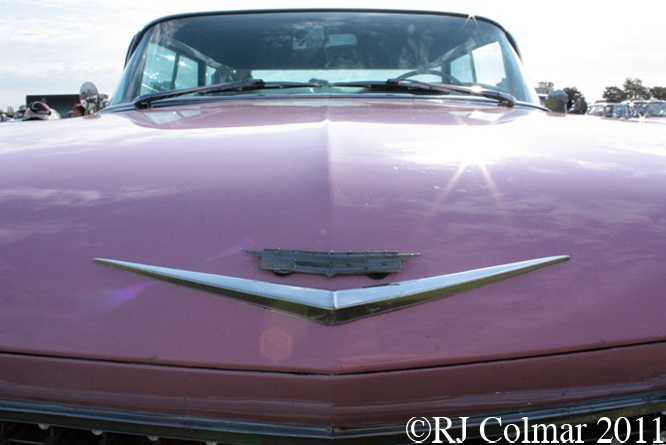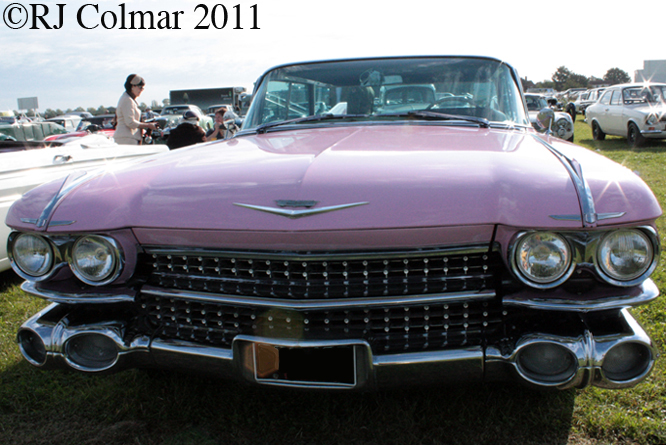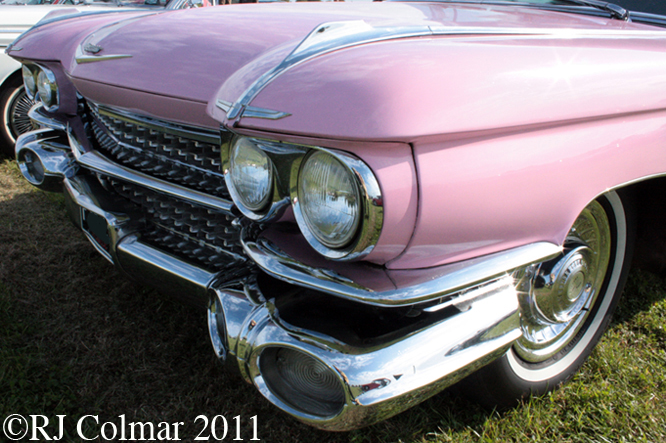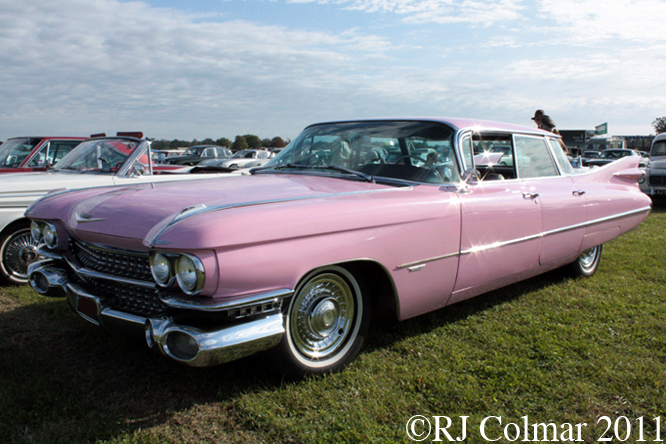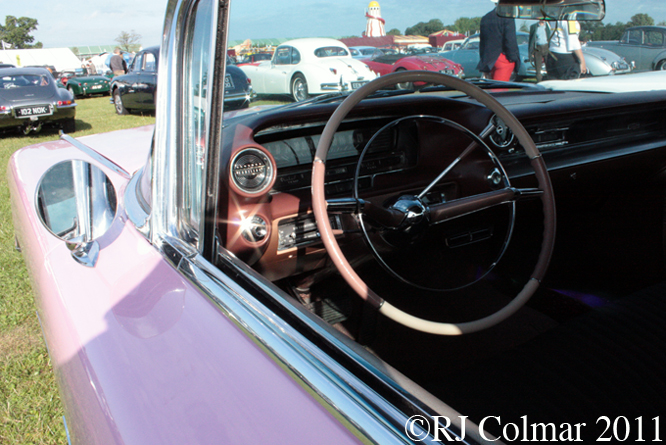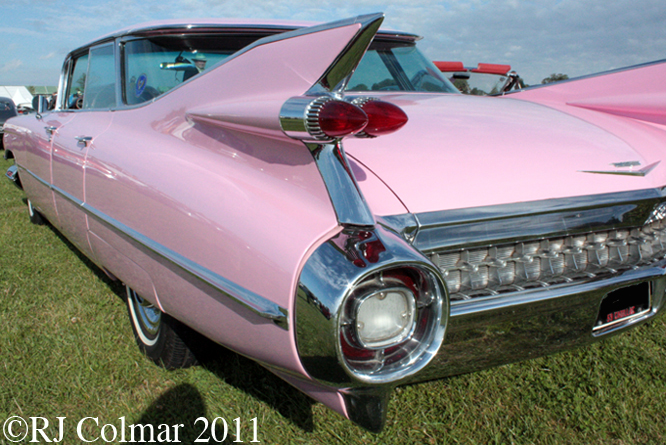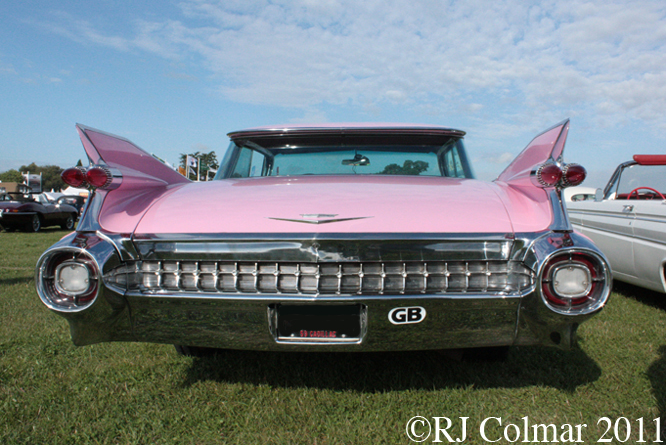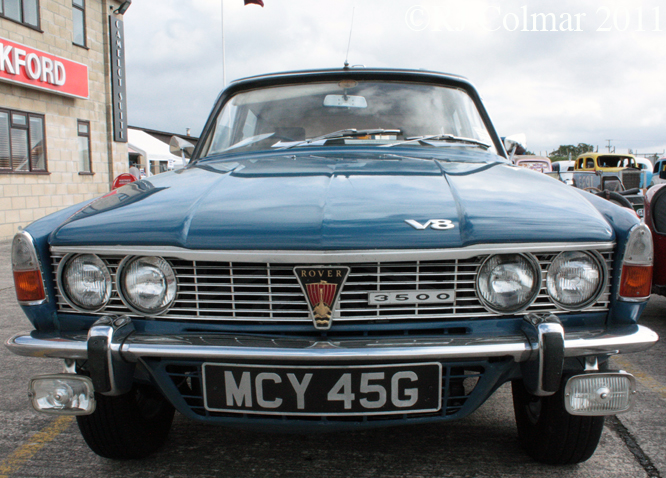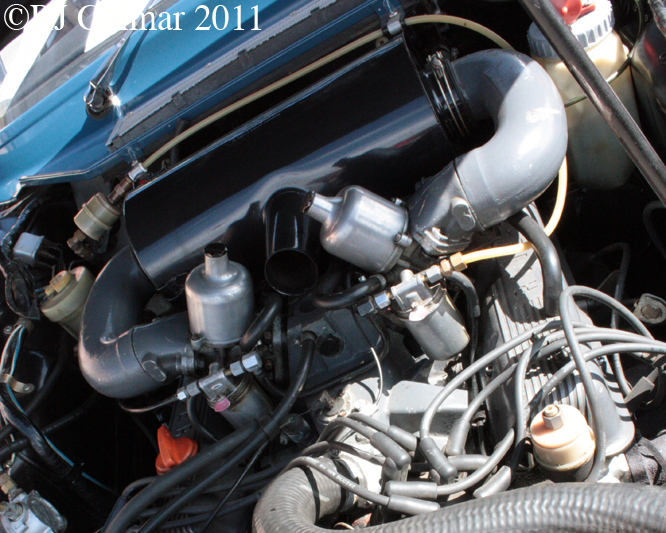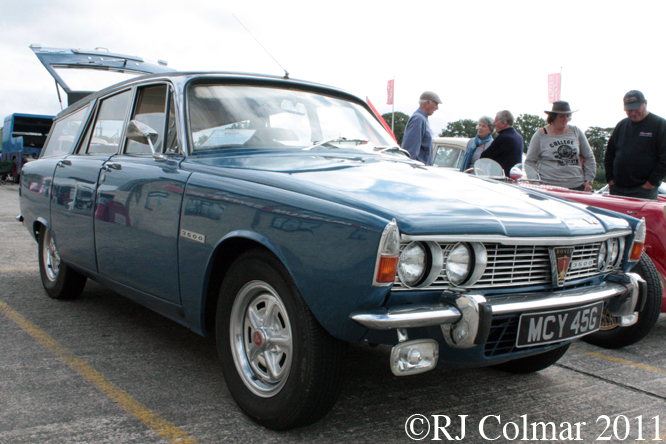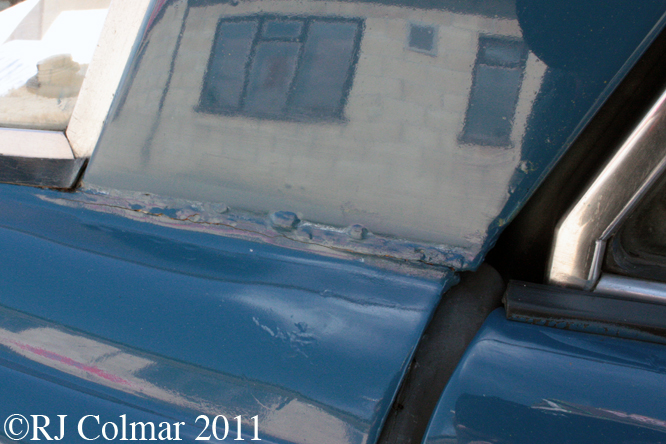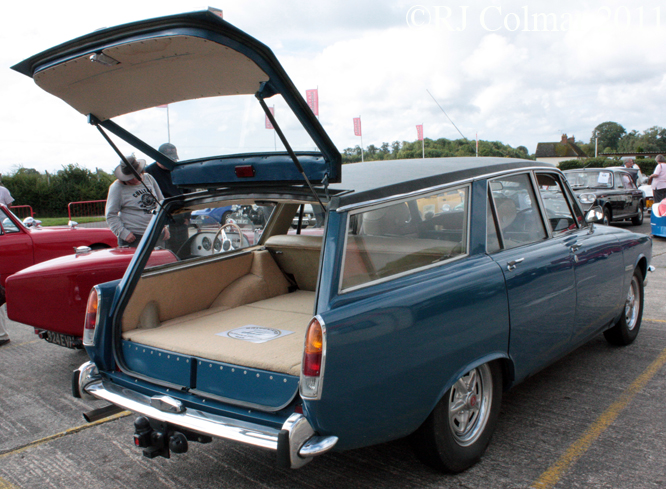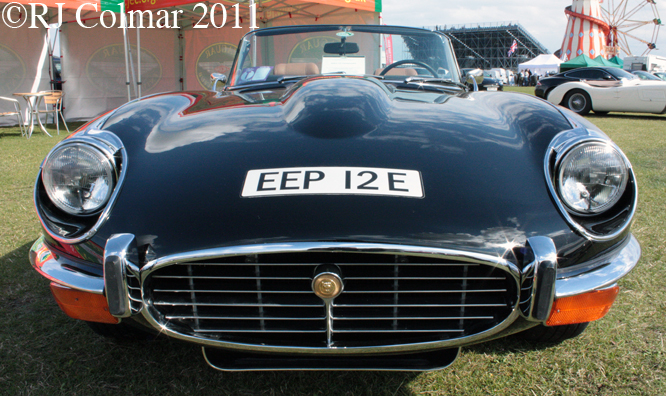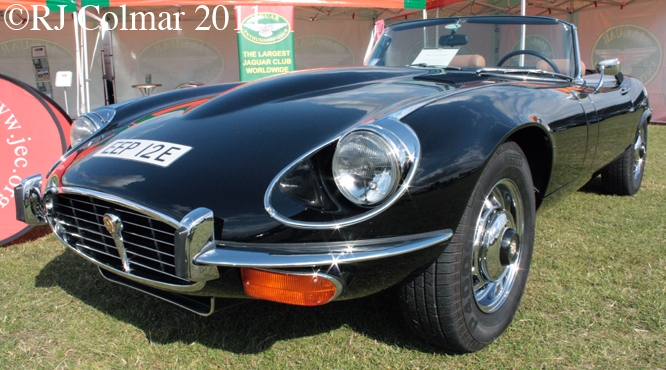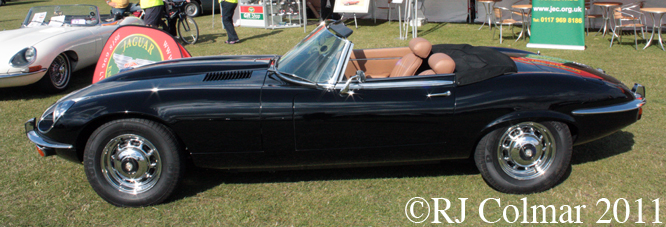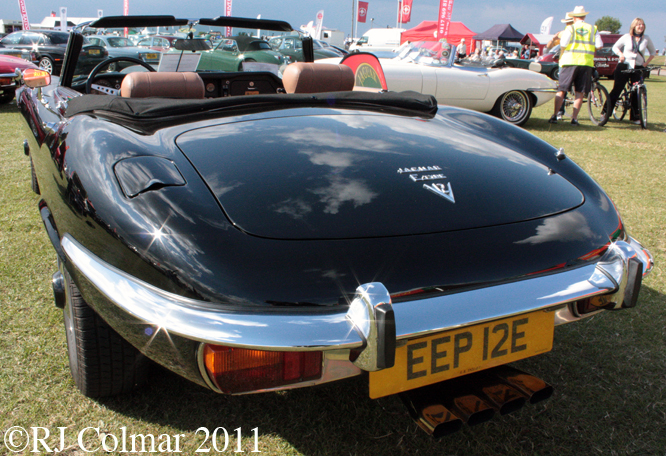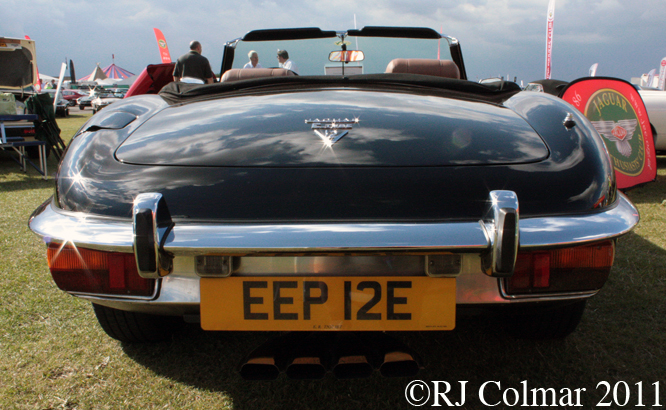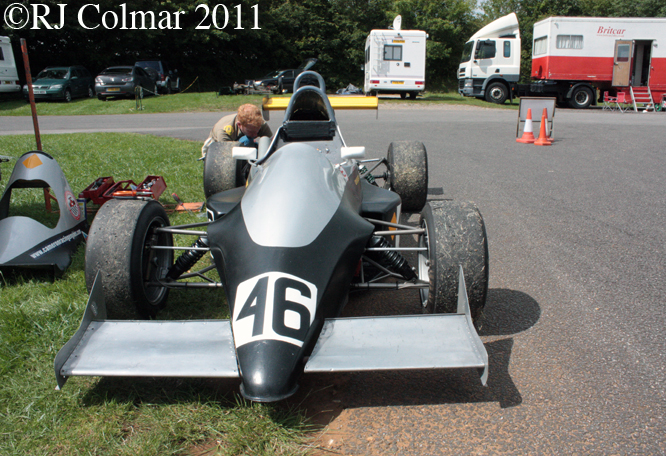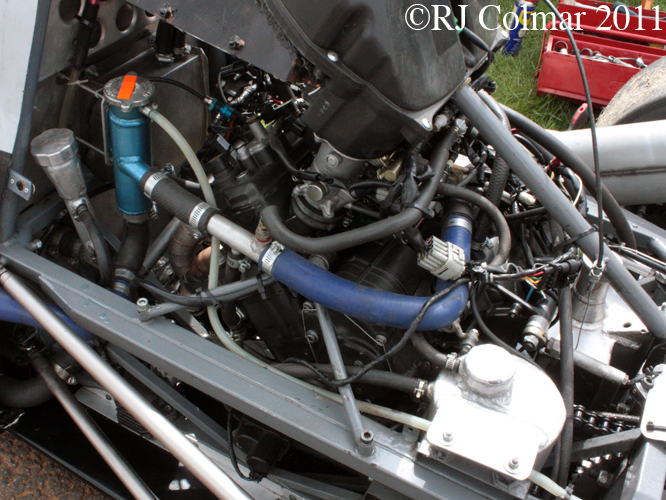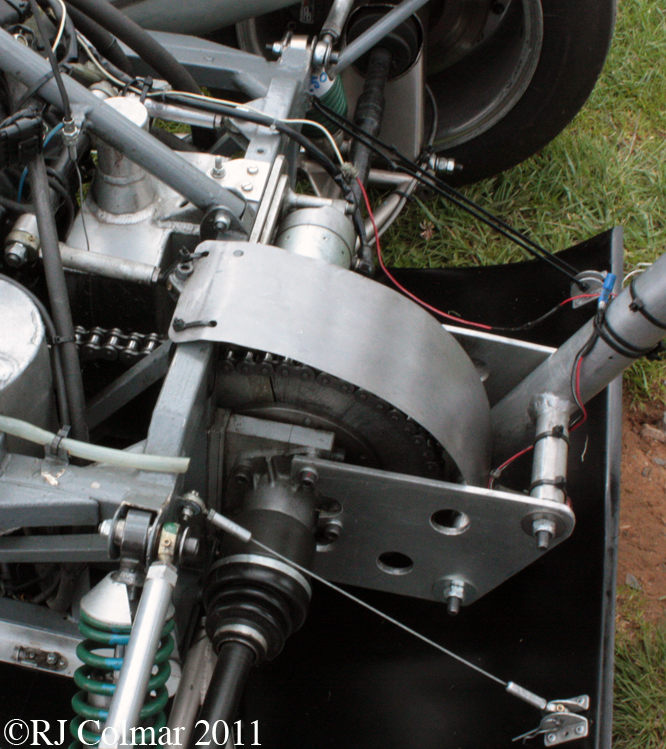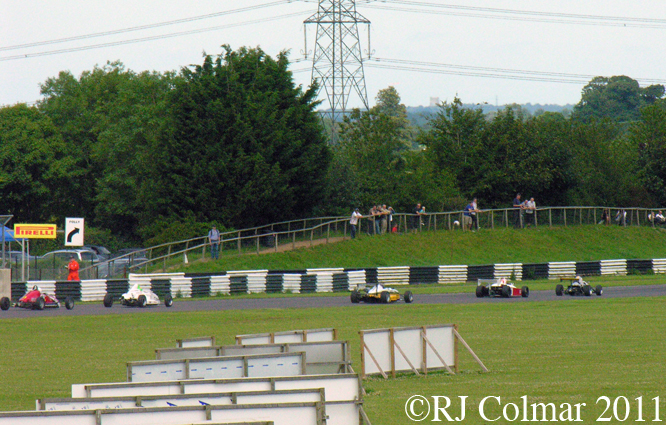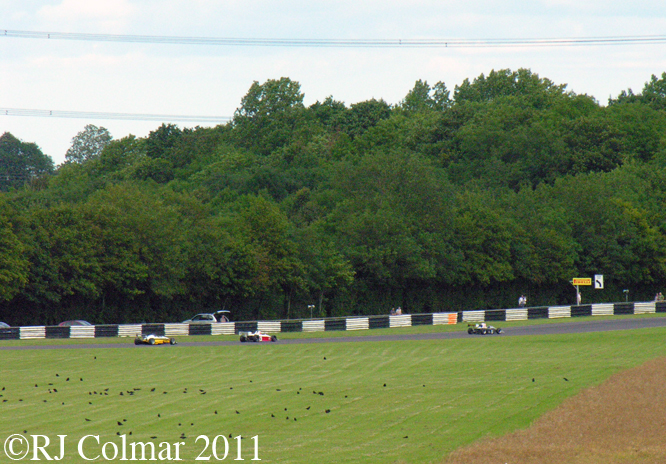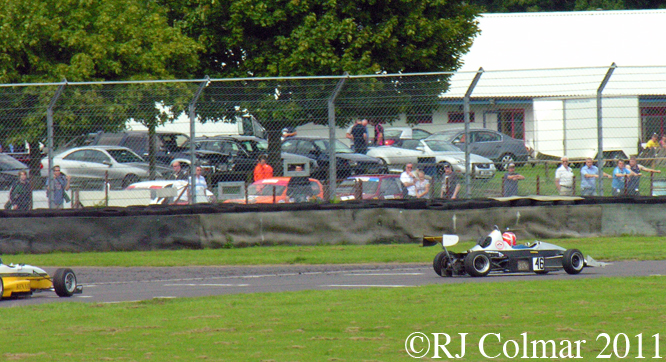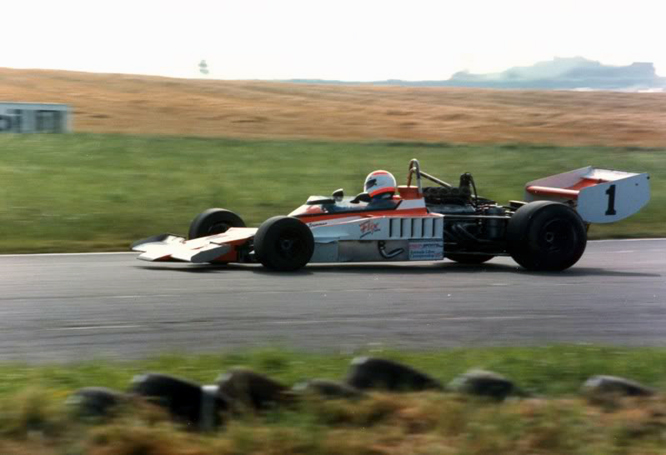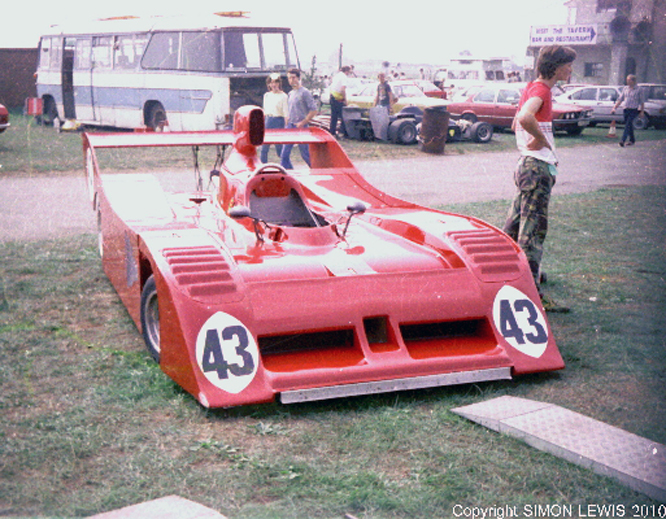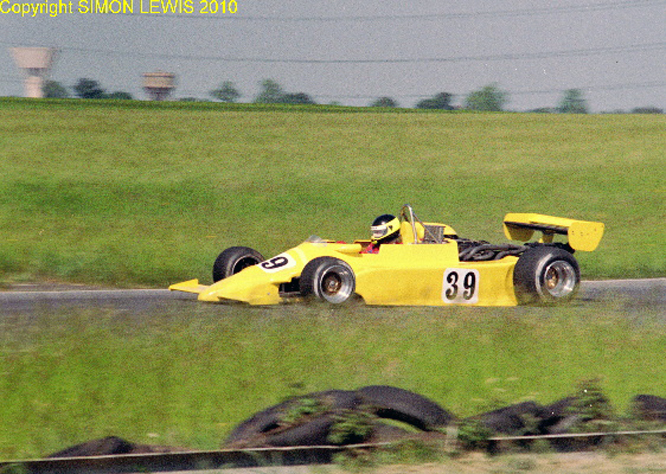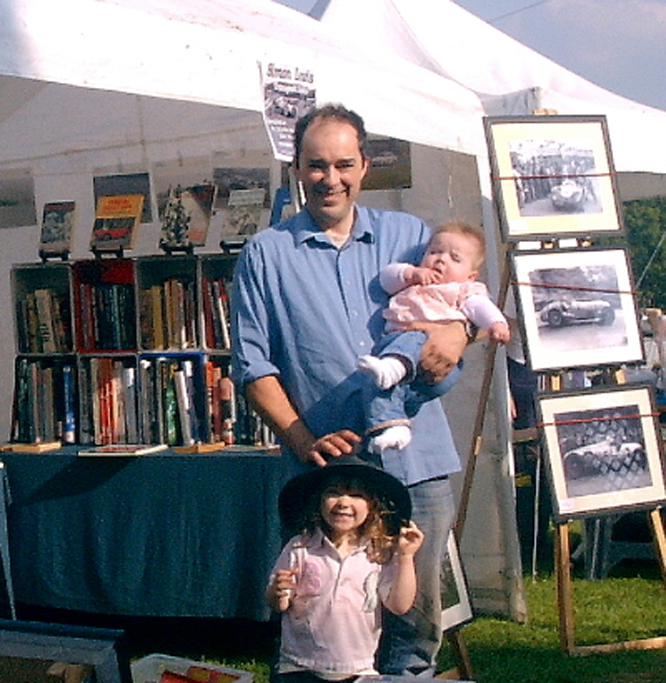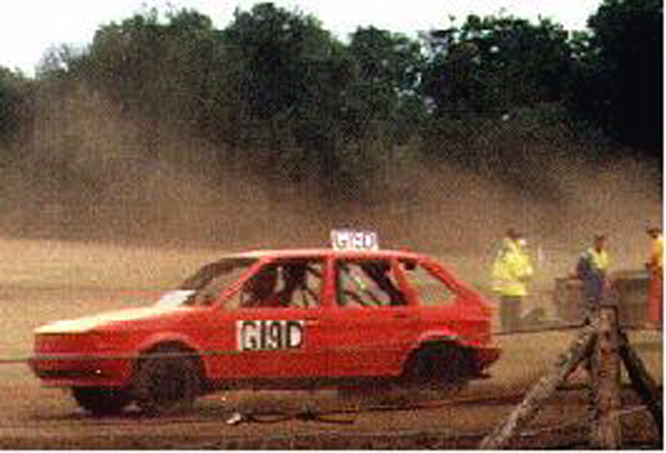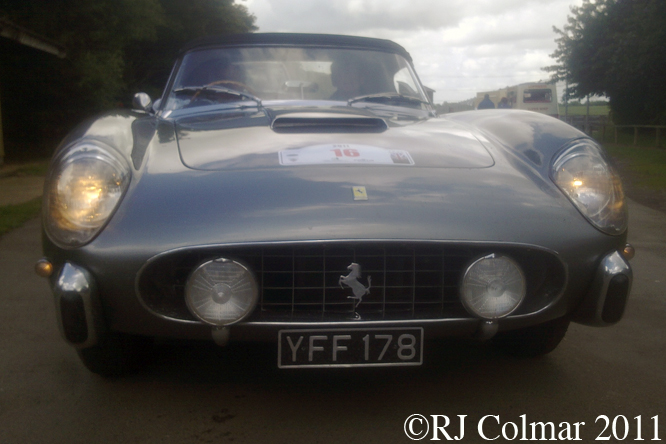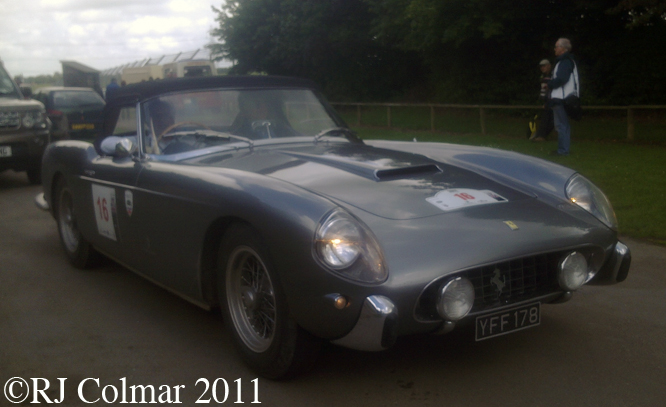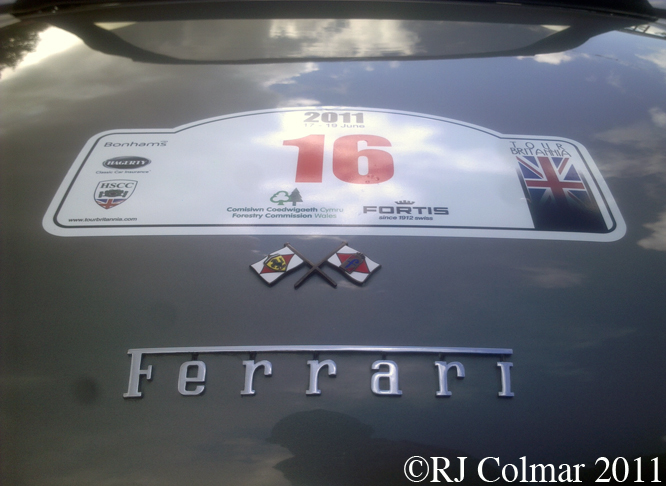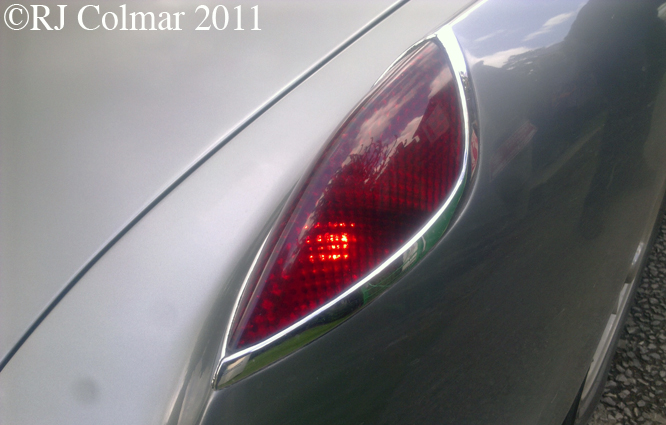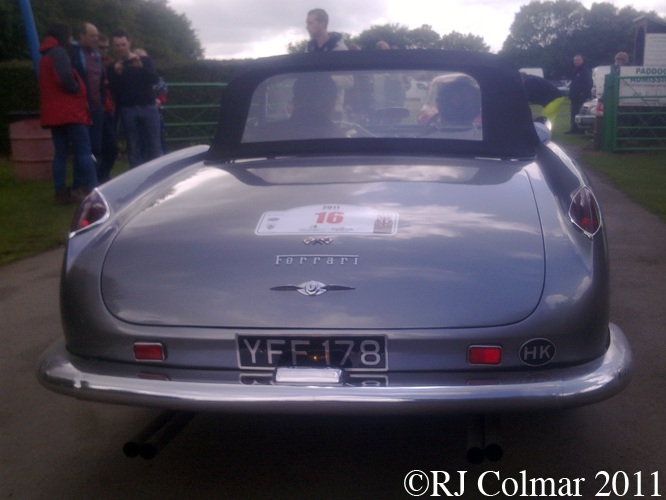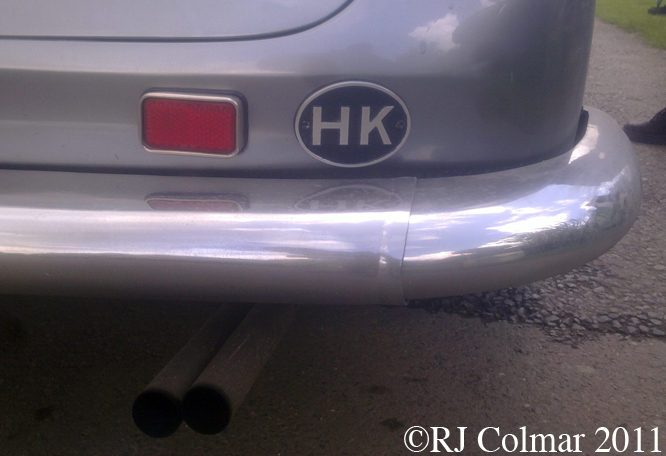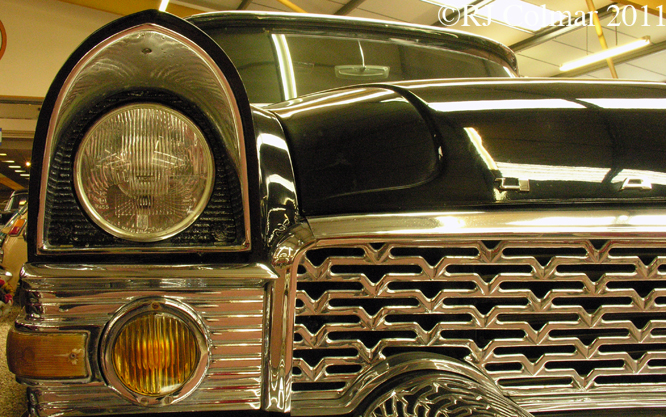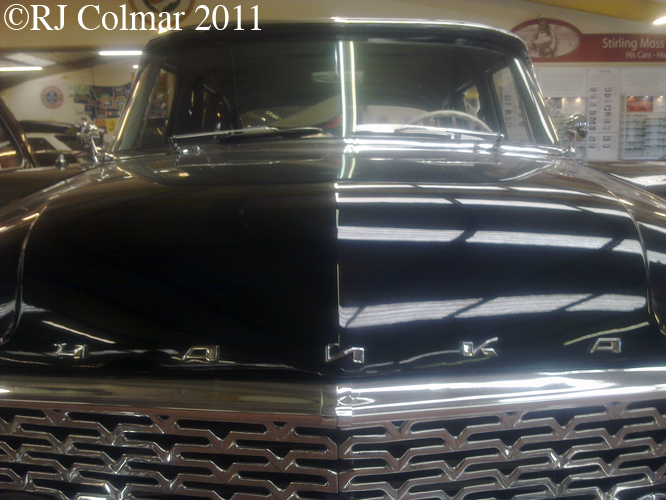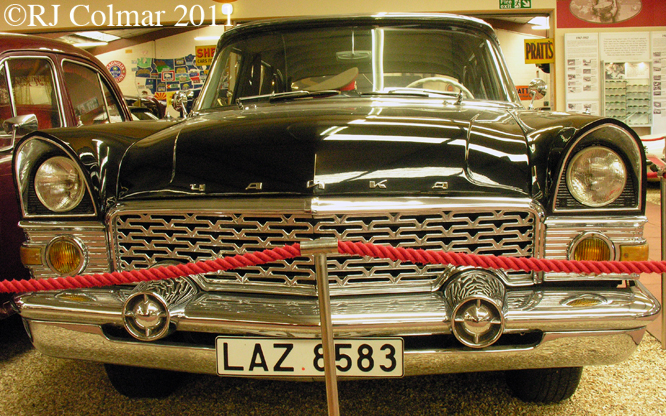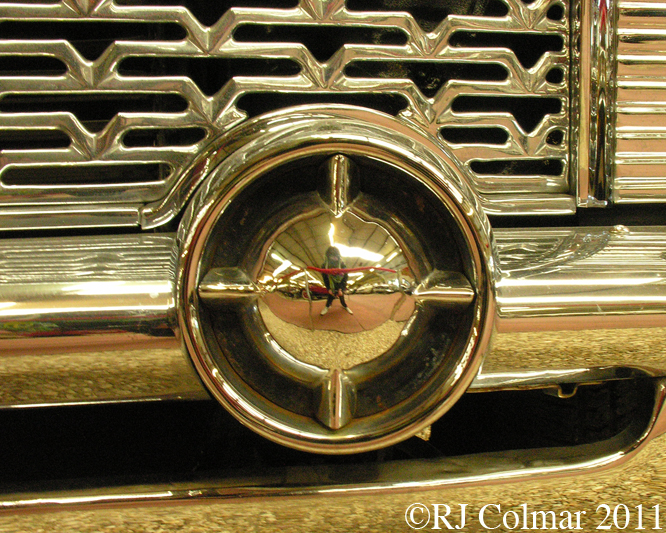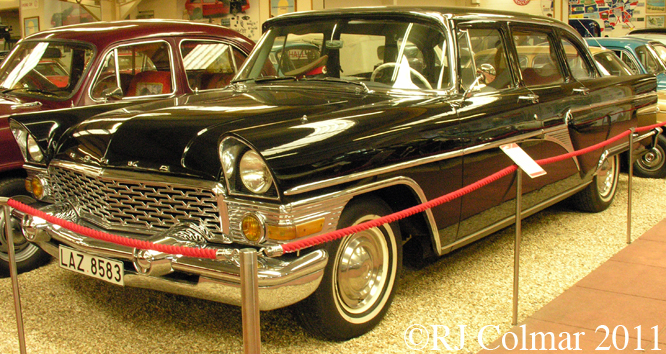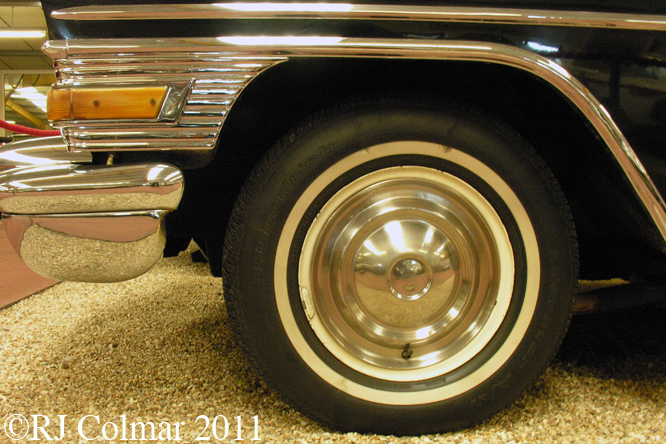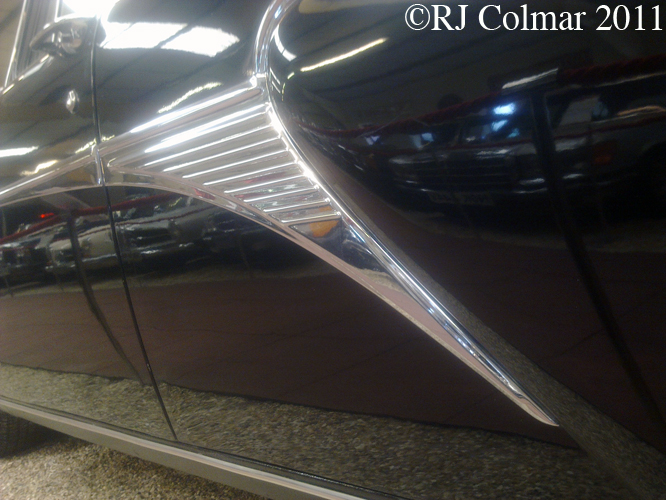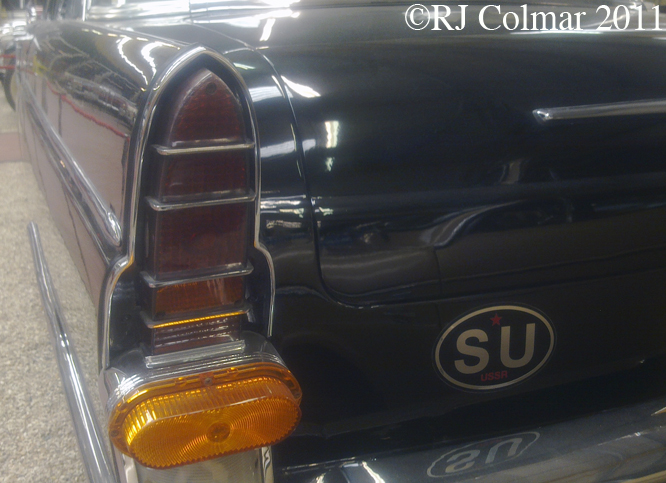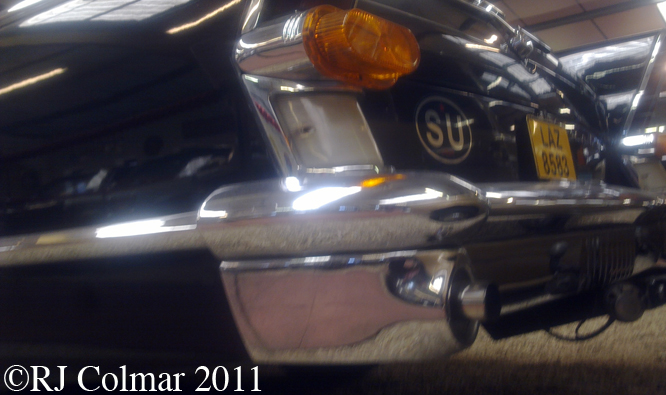Shopping Around for ideas to mark the 35th Anniversary of Elvis Presley’s passing I thought it would be interesting to look at one of the few Cadillac models that evaded the King on his notorious Cadillac buying sprees.
Bill Mitchel was responsible for the design of the 1959 13 model Cadillac range, 11 of which shared the same chassis with a 130″ wheelbase, the Fleetwood 75 Limousine and Sedan shared a chassis with a 149.5″ wheelbase.
A 6.4 liter / 390 cui V8 was used to power all of the ’59 Cadillacs, which weighed between 4690 and 5570 lbs, all tuned to produce 325 hp with the exception of the Eldorado which had 345 hp.
Differentiating the ’59 models from the exterior can be quite easy, if all of the exterior trim is attached.
We can tell this is a base 6239 model by the small badge below the arrow behind the front wheel on the front wing / fender.
Popular options for the ’59 Cadillacs included radio with rear speaker for $165, or radio with rear speaker AND remote control $247, a six way power seat came in at $89.
The 4 window sedans with their distinctive wrap around rear screens are also known as ‘flat tops’.
It may seem strange that Elvis, a well documented Cadillac enthusiast, never bought or owned a ’59 model, which is so clearly identified with the rock’n’roll era. Until one realises that he was doing his duty for his country at the time, serving with the 3rd Armoured Division in Friedburg Germany where he enjoyed the delights of his VW Beetle and BMW 507 convertible while keeping a lowish, by his standards, profile.
Thanks for joining me on this “Shopping Around #1” edition of “Gettin’ a li’l psycho on tyres” I hope you will join me again tomorrow. Don’t forget to come back now !

